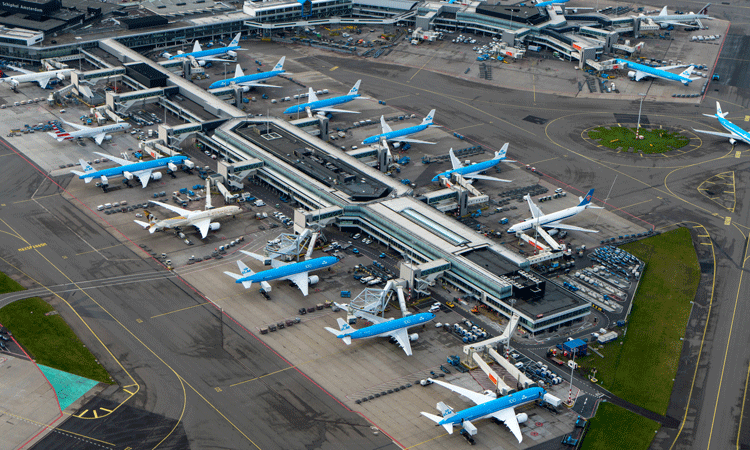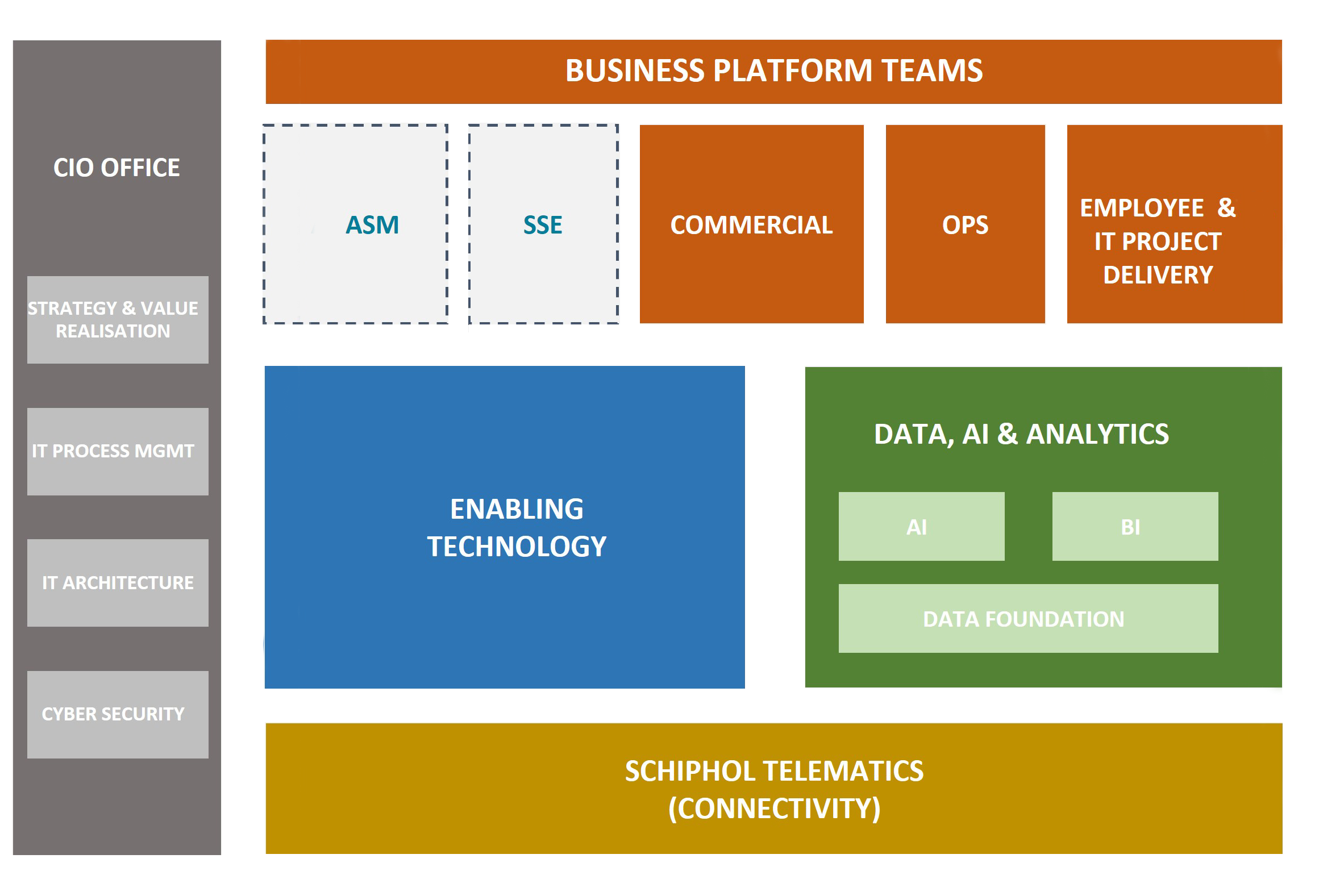Why airports should think like tech companies
- Like
- Digg
- Del
- Tumblr
- VKontakte
- Buffer
- Love This
- Odnoklassniki
- Meneame
- Blogger
- Amazon
- Yahoo Mail
- Gmail
- AOL
- Newsvine
- HackerNews
- Evernote
- MySpace
- Mail.ru
- Viadeo
- Line
- Comments
- Yummly
- SMS
- Viber
- Telegram
- Subscribe
- Skype
- Facebook Messenger
- Kakao
- LiveJournal
- Yammer
- Edgar
- Fintel
- Mix
- Instapaper
- Copy Link
Posted: 3 March 2022 | Sjoerd Blüm | No comments yet
International Airport Review’s Editor, Holly Miles, sat down with Sjoerd Blüm, CIO of Amsterdam Airport Schiphol. Together they discussed the airport’s digital transformation journey.


Schiphol Airport is the grounds for heated discussion about emissions between airlines and the Dutch government
Schiphol wants to use its recovery from the COVID-19 pandemic to build back better. They are striving to become leaders of sustainability and passenger experience in the airport sector, and they believe that technology and data is the key disruptor for the industry in the future.
Airports should think like tech companies, according to Blüm, and that is exactly what Amsterdam Airport Schiphol (AMS) is doing now. Airport digitalisation has accelerated during the pandemic and Schiphol was no exception: “We like many other airports had to rethink and adjust our organisation to the new reality. But when it came to digital, we took a mindset of ‘think like a tech company’. And the reason is in fact quite straight forward, because if you see what’s already happening today in airport hubs and for example, in Amsterdam, everything that business colleagues do – from operations to asset management, and from safety and security, to commercial – is already completely driven by technology and data. You could say that doing tech and data work becomes part of their primary activity and is inseparable. You cannot do what you are doing without it. That’s exactly what a tech company is.”
Blüm said that Schiphol has really embraced this thinking – especially the executive leadership. Now, when you look closely at Schiphol, you can no longer see the traditional infrastructure company that airports used to be, but rather a company that starts to look like a tech company, driven forward by IT and data.
This idea was echoed in the CEO’s 2021 New Year Manifesto, which means that this thinking comes straight from the top. “Embracing that and also having your CEO say that really is a big statement that impacts all of the parts of your business,” said Blüm. So, in practice this means that your airport operations or commercial teams for example should not be looking to the IT team to be carrying out their technology and data work – it should be part of who they are.
This idea forms the basis of a new IT organisation at Schiphol with three parts as Blüm explained. “The first is your technology and data foundation where your productivity, shared platforms, and integration services are delivered – and that’s available to all sides of the businesses. So, on the data side, you have your one capability where you get your data ready – you put that on a platform and then all businesses can extract value from that.”
This is said to kill all the inefficiencies that you see today across many other airports, who prepare the same data five or six times across the business.
In practice this means that your airport operations or commercial teams for example should not be looking to the IT team to be carrying out their technology and data work – it should be part of who they are”
Next comes the business platforms where they integrate the technology and data in all business areas. “That way, in each part of the business platforms such as operations platform, safety, security & environment platform, asset management platform, commercial platform etc, we grow together the capabilities that we have to actually boost the digitisation of that domain.”
To govern these parts then, you have one set of rules according to Blüm, which is the third and final piece of the puzzle and what they call ‘guardrails’. This is where the airport’s cyber entities should reside.
“Your architecture should make sure that the foundation and platform entities that still connect you govern those within one set of rules from the guardrails,” commented the CIO.
TAKE A READ:
Amsterdam Airport Schiphol invests in vehicles to taxi aircraft sustainably
Fully automated system cargo terminal to open at Schiphol Airport
This leads to the organisation that Schiphol is today: five business platforms, three foundational teams, one guardrail team, and Finance & HR Navigation, all of them driving business crucial developments as you can see in the diagram.


Credit: Royal Schiphol Group
As the aviation sector emerges from the pandemic, airports and what passengers come to expect from them will change. Therefore, airports need to evolve to keep up with this change. The possibility of modern digital travel experiences is within reach and tech companies are leading the way, so there is no reason why airports cannot achieve the same.
Biography


Since 2020, all data and digital priorities were added to his responsibility. Since then, Blüm has implemented a new organisation model with a “think like a tech company” mindset. This shifted business platform teams into the business where they create products as “sunshine IT”, building on a technology and data foundations within strong guardrails.
Blüm also is a non-executive board member for a technology company specialised in data integration and he is very active as (board) member of the CIO Platform for Dutch CIO’s and the World IT Standing Committee (WAITSC) of ACI.
Issue
Related topics
Airport development, Airside operations, COVID-19, Digital transformation, New technologies, Passenger experience and seamless travel, Passenger volumes, Safety, Security, Terminal operations



















